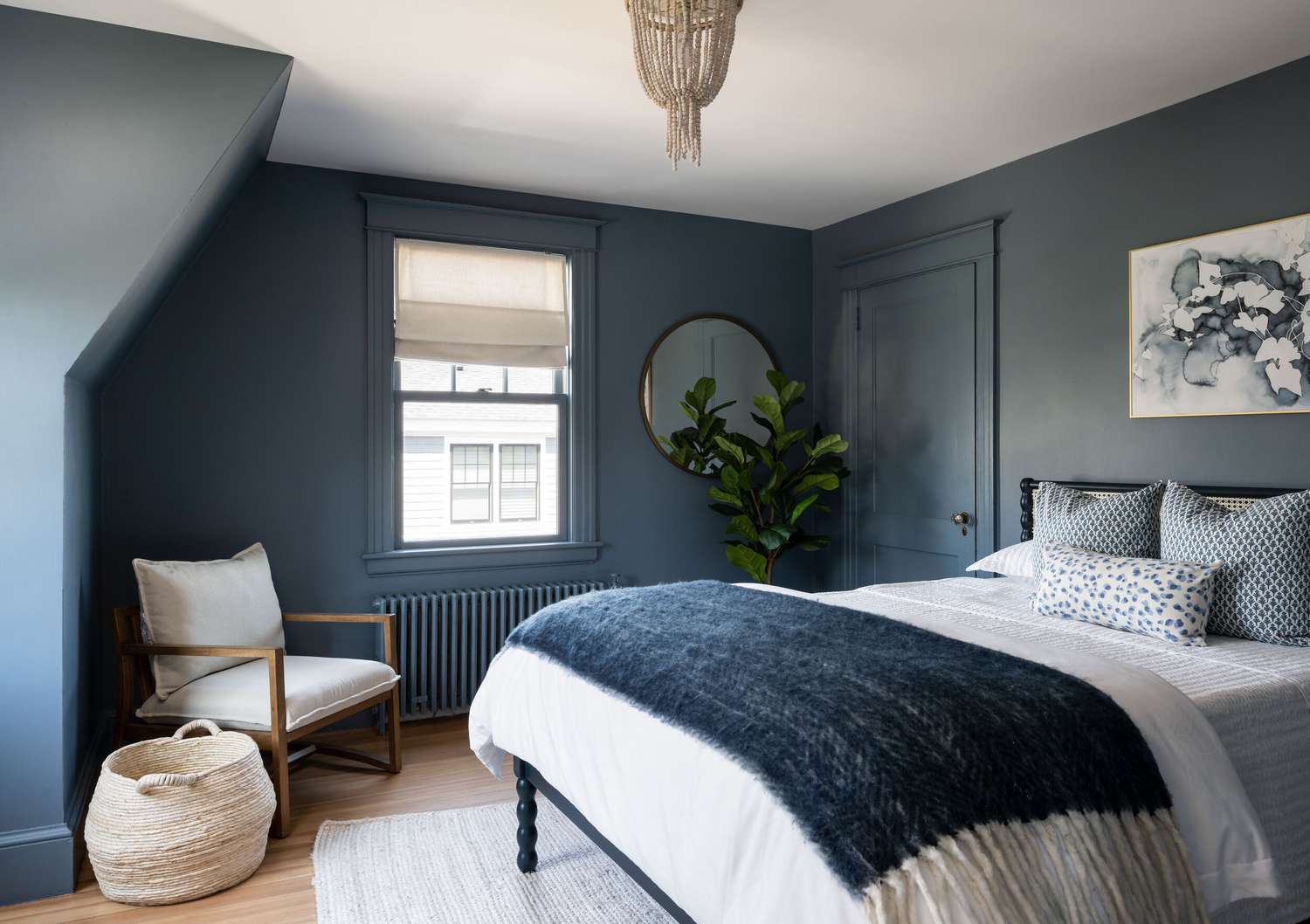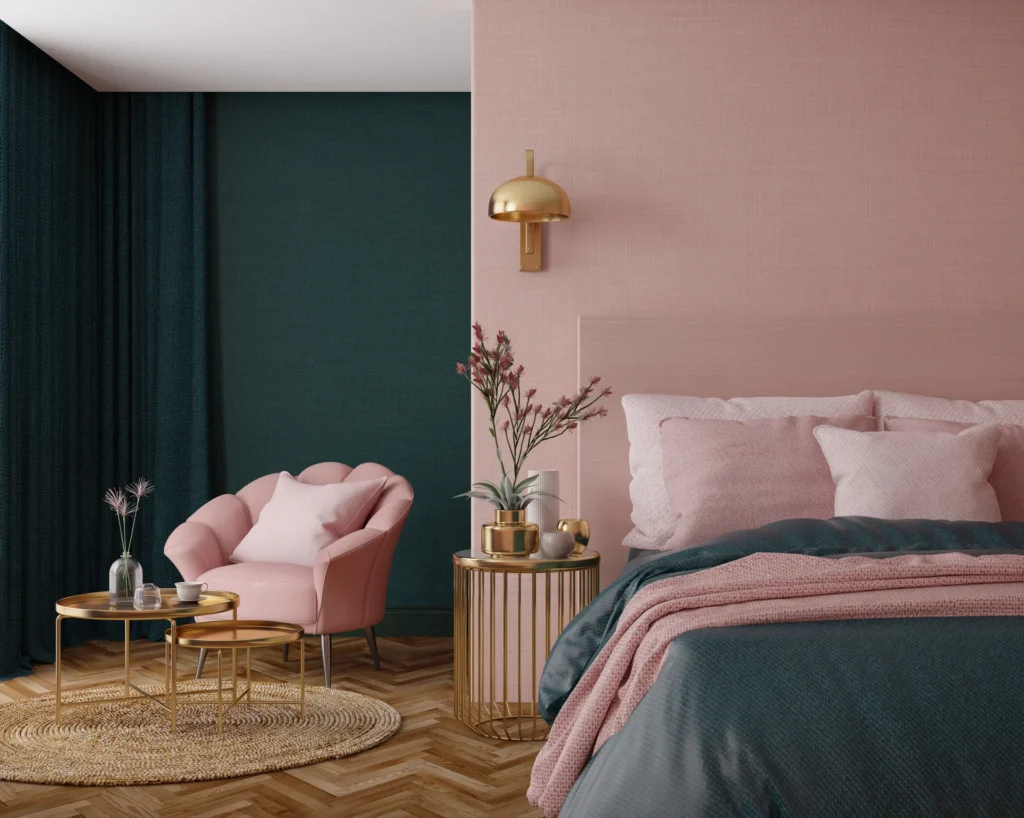
Introduction To Calming Bedroom Color
Calming Bedroom Color are soft, muted colors like blue, green, and lavender. It can promote relaxation and improve sleep quality. These hues create a calming atmosphere conducive to rest.
Choosing the right color scheme for your bedroom significantly impacts your sleep quality. Soft, muted colors such as blue, green, and lavender are particularly effective in creating a serene environment. These shades are known to have calming effects, helping to reduce stress and anxiety.
A peaceful bedroom ambiance encourages relaxation, making it easier to fall asleep and stay asleep. Neutral tones like beige and soft gray also contribute to a tranquil setting without being overly stimulating. By selecting the appropriate colors, you can transform your bedroom into a sanctuary of rest and rejuvenation.
Cool Tones For Relaxation
Cool tones like soft blues and gentle greens create a serene atmosphere, promoting relaxation and better sleep. Transform your bedroom into a peaceful haven with calming color schemes.
Blue Shades For Calming Bedroom Color
Blue is known to be a calming color. It can help lower blood pressure. Soft blues like baby blue are very soothing. Darker blues, such as navy, can also create a calm space. Mixing different shades of blue can add depth to your room.
Green Hues For Calming Bedroom Color
Green is another relaxing color. It reminds people of nature. Light greens can make your room feel fresh. Darker greens add a sense of peace. Combining green with other colors like beige can enhance the tranquil effect.
Warm Tones For Coziness

Leave a Comment / Colors / By ashrafsalman
Soft pinks can make your bedroom feel warm and cozy. The gentle hue creates a calming effect. It helps in reducing stress and promotes relaxation. A light pink wall can pair well with white or beige furniture. Adding pink pillows or a pink rug can add extra warmth. Your bedroom will feel like a safe haven.
Gentle yellows can brighten your room without being too harsh. This color radiates warmth and makes you feel happy. Light yellow shades are soothing and help you relax. Yellow can also enhance natural light in your room. Add yellow curtains or a yellow bedspread for a cozy touch. Your bedroom will feel sunny and inviting.
Neutral Colors For Balance
Whites and creams create a peaceful bedroom. These colors make the room feel larger. They also reflect light well. This keeps the room bright and airy. Creams can add warmth to the space. This makes it feel cozy. Pair with soft fabrics for added comfort. White bedding can create a hotel-like feel. This is perfect for restful nights.
Gray tones are very calming. They can be used in various shades. Light gray can make the room look spacious. Dark gray adds a touch of elegance. These tones are versatile and easy to match. They can be paired with many other colors. Gray tones create a balanced atmosphere. This helps in promoting better sleep.
Earthy Tones For Grounding For Calming Bedroom Color
Browns and beiges bring a sense of calm. They remind us of nature. These colors are soft and soothing. They help you feel grounded.
Use beige for the walls. Add brown furniture. This will create a cozy space. Your bedroom will feel warm and inviting.
Terracotta accents add warmth. This color is like the earth. It feels natural and comforting. Use terracotta for pillows or rugs.
These accents can make a big difference. They add a touch of color. Your room will look more lively.
Color Combinations

Monochromatic color schemes use one color in different shades. This creates a peaceful look. Light blue walls with darker blue bedding can be very soothing. Soft grey tones are also calming. They make the room feel cozy. Stick to one color to avoid chaos. Different shades of green can feel refreshing. This keeps the bedroom serene and relaxing.
Complementary colors are opposite on the color wheel. Blue and orange are a great example. They create a balanced look. Soft blue walls with peach accents can be calming. Lavender and soft yellow are also good pairs. They bring a fresh vibe. These pairs make the room feel inviting. Use them for a balanced and cozy bedroom.
Decor Tips For Calming Bedroom Color
Soft, breathable fabrics create a cozy atmosphere. Cotton and linen are great choices. These materials help keep you cool at night. Choose neutral colors for a calming effect. Pale blues and greens also work well. Avoid bright colors and busy patterns. They can be too stimulating for bedtime. Layering different textures adds depth and comfort. A plush rug underfoot can make mornings more pleasant. Don’t forget blackout curtains to block light.
Soft lighting sets the mood for relaxation. Use warm-toned bulbs for a cozy feel. Avoid harsh, bright lights in the bedroom. Bedside lamps with dimmers are ideal. String lights can add a magical touch. Consider a salt lamp for a gentle, warm glow. Nightlights are useful for middle-of-the-night trips. Smart lights can be controlled from your phone. Set them to gradually dim as bedtime approaches.
Personalizing Your Space
Your bedroom should reflect your personality. Choose colors that make you happy. Soft pastels can be very soothing. Light blues and greens are great choices. They remind you of nature and calmness.
Bold accents can add a personal touch. Think about pillows or rugs in your favorite colors. Keep the overall look simple. Too many colors can be distracting.
Plants can make a room feel peaceful. They also clean the air. Choose plants that are easy to care for. Lavender and jasmine are good options. They have calming scents.
Soft lighting is important for relaxation. Use lamps with warm bulbs. Avoid bright, harsh lights. Candles can also create a cozy atmosphere. Just be careful with open flames.
Frequently Asked Questions
What Colors Help You Sleep Better?
Soft blues, greens, and pastel shades can promote better sleep. These colors create a calming and serene environment in your bedroom.
Are Dark Colors Good For Bedroom Sleep?
Dark colors can be soothing but might feel heavy. Balance with lighter accents to avoid a gloomy atmosphere.
How Do Pastel Colors Affect Sleep?
Pastel colors like light pink and lavender reduce stress. They create a peaceful environment, promoting better sleep.
Can Bright Colors Disturb Sleep?
Yes, bright colors can be stimulating and disruptive. Opt for muted tones to create a restful bedroom ambiance.
Conclusion
Creating a calming bedroom color scheme can greatly improve your sleep quality. Soft blues, gentle greens, and muted pastels are excellent choices. Experiment with different shades to find your perfect match. By optimizing your bedroom’s colors, you can create a serene sanctuary for restful nights.
Sleep better by transforming your space today.
